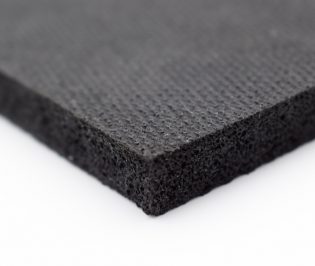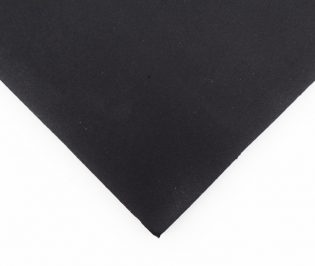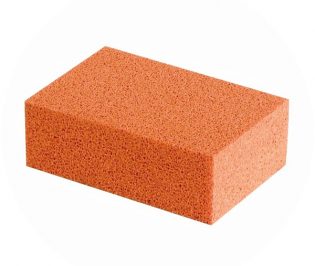Sponge Rubber
The technically correct term for closed cell sponge rubber is expanded rubber. The cells are like individual balloons, holding gas and not allowing moisture to pass through as long as the cell wall has not burst. The raw compound is mixed on the same type of equipment used to mix solid rubber compounds, but a chemical blowing agent is also added. Under the heat and pressure of a pre-cure or pre-forming process, this additive decomposes and mixes with the rubber compound and generates nitrogen gas. As this reaction is occurring, the mixed batch is placed into an oven and allowed to expand into a bun from 2" to 4" thick. The bun of closed cell sponge rubber is then aged and split into sheets typically from .062" thick and greater.
Constant deflection of closed cell sponge rubber may cause the gas to permeate through the cell walls. Over compression of the closed cell sponge such as beyond 50 - 70% deflection, may cause the cells to burst. When a closed cell sponge gasket has been over compressed, the gasket may rebound very slowly, or not at all, compromising the integrity of the gasket. Most closed cell sponge gaskets should be deflected 20 - 35% for optimal sealing performance. These properties are discussed in ASTM D1056, ASTM D6576 and Mil-R-6130C.
Even though closed cell sponge rubber regularly involves using silicone sponge rubber, there are many circumstances where non-silicone closed cell sponge rubber is more suitable. The following closed cell sponge / expanded rubber gasket materials are some of the most frequently used materials by our customers. Visit the Closed Cell Rubber / Neoprene Data Sheets page for detailed technical information on these expanded rubber materials.
Closed Cell Neoprene Sponge Rubber
Produced from 100% neoprene polymer, most closed cell neoprene sponge products meet UL 94HF-1 flame rating. They are generally servicable from -40°F to 158°F continuous and withstand 200°F intermittently. Premium closed cell neoprene sponge products will resist light oil contact, ozone, alkalis and acids, making them a good choice for general enclosure door gaskets.
Closed Cell Blended Sponge Rubber
Produced from a blend of neoprene, EPDM and SBR, these grades are the most frequently supplied for general purpose sponge gaskets. If a commercial closed cell neoprene sponge gasket is requested, this would likely be supplied. These products also normally meet UL 94HF-1 and will take -70°F without cracking due to cold embrittlement. The oil resistance will not be as good as on the 100% neoprene sponge products.
Closed Cell EPDM Sponge Rubber
Closed cell EPDM sponge materials will not meet the UL flame rating without additives and they will not withstand oils or fuels. However, they will stand up to outdoor conditions such as water, ozone and indirect sunlight better than neoprene.






